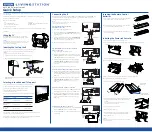
11-2
ASCII Command Interface
BE1-951
ASCII COMMAND INTERFACE
A computer terminal or PC running terminal emulation software can be used at any of the three serial ports
to send commands to the relay. Simple ASCII command language is used to communicate with the relay.
When the relay receives a command, it responds with the appropriate action. ASCII commands can be used
in human to machine interactions and in batch download type operations.
Command Structure
An ASCII command consists of a string made up of one or two letters followed by a hyphen and an object
name.
xy-object name
Where:
x
Specifies the general command function.
y
Specifies the command subgroup.
object name
Defines the specific object to which the command refers.
Examples of object names include 51N (neutral inverse time overcurrent function) and PIA (phase A peak
current demand register). A command string entered by itself is a read command. A command string
followed by an equal sign (=) and one or more parameters is a write command.
General command functions are organized into five major groups plus one group of miscellaneous
commands.
CONTROL (C):
Control commands perform select-before-operate control actions such as circuit
breaker tripping and closing and active setting group changes. Subgroups include
Select (S) and Operate (O).
GLOBAL (G):
One Global command performs operations that don’t fall into the other general groups.
The command for reading and changing passwords (GS-PW) is the only global
command available.
METERING (M):
Commands in this group report all real-time metering values. No subgroup is used
with metering commands.
REPORTS (R):
Reports commands read and reset reporting functions such as time and date, demand
registers, and breaker duty statistics. Subgroups include Alarms (A), Breaker
Monitoring (B), Demand Recording (D), Fault Summary Reporting (F), General
Information (G), Sequence of Events Recorder (S), and Oscillography (O).
SETTINGS (S):
This group contains all of the setting parameters that govern relay function.
Subgroups include Setting Groups 0, 1, 2, and 3 (0, 1, 2, 3), Protection Settings (P) not
in setting groups, Alarm Settings (A), Breaker Monitor Settings (B), General Settings
(G), and Logic Settings (L).
MISCELLANEOUS: Miscellaneous commands include Access, Exit, and Help. Note that only the first letter
of these commands must be entered; entering the full command name is optional.
Using the ASCII Command Interface
Human to Machine ASCII Command Operations
Using ASCII commands, settings can be read and changed on a function by function basis. The mnemonic
format of the commands helps you interact with the relay. It isn’t necessary to remember all of the object
names. Most commands don’t require that you specify a complete object name. If the first two letters of a
command are entered, the relay will respond with all applicable object names.
















































